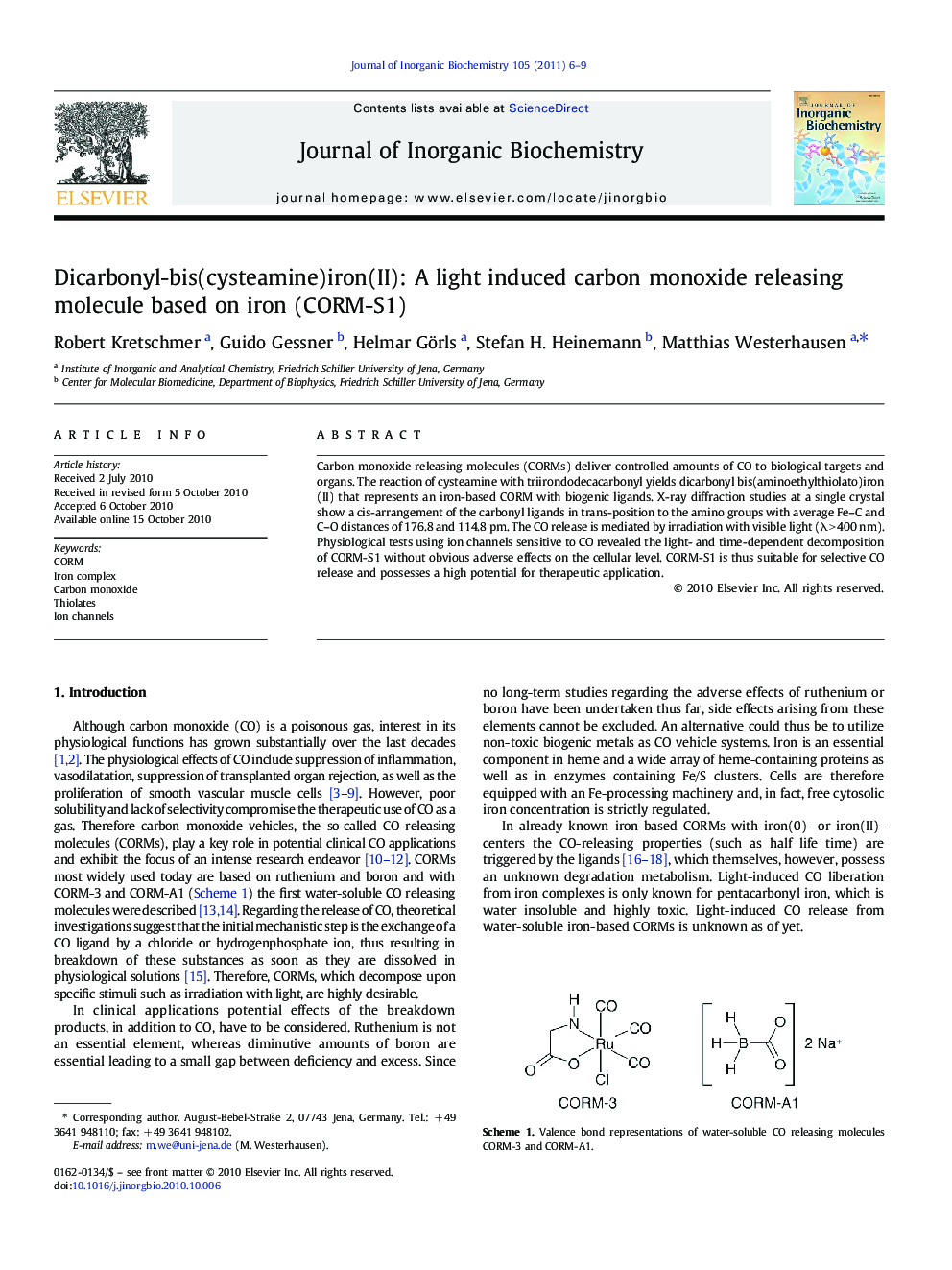| Article ID | Journal | Published Year | Pages | File Type |
|---|---|---|---|---|
| 1316319 | Journal of Inorganic Biochemistry | 2011 | 4 Pages |
Carbon monoxide releasing molecules (CORMs) deliver controlled amounts of CO to biological targets and organs. The reaction of cysteamine with triirondodecacarbonyl yields dicarbonyl bis(aminoethylthiolato)iron(II) that represents an iron-based CORM with biogenic ligands. X-ray diffraction studies at a single crystal show a cis-arrangement of the carbonyl ligands in trans-position to the amino groups with average Fe–C and C–O distances of 176.8 and 114.8 pm. The CO release is mediated by irradiation with visible light (λ > 400 nm). Physiological tests using ion channels sensitive to CO revealed the light- and time-dependent decomposition of CORM-S1 without obvious adverse effects on the cellular level. CORM-S1 is thus suitable for selective CO release and possesses a high potential for therapeutic application.
Graphical AbstractDicarbonyl bis(aminoethylthiolato)iron(II) represents an iron-based carbon monoxide releasing molecule (CORM) with biogenic ligands. The CO release is mediated by irradiation with visible light and physiological tests reveal the light- and time-dependent decomposition. Hence, CORM-S1 possesses a high potential for therapeutic application.Figure optionsDownload full-size imageDownload as PowerPoint slide
